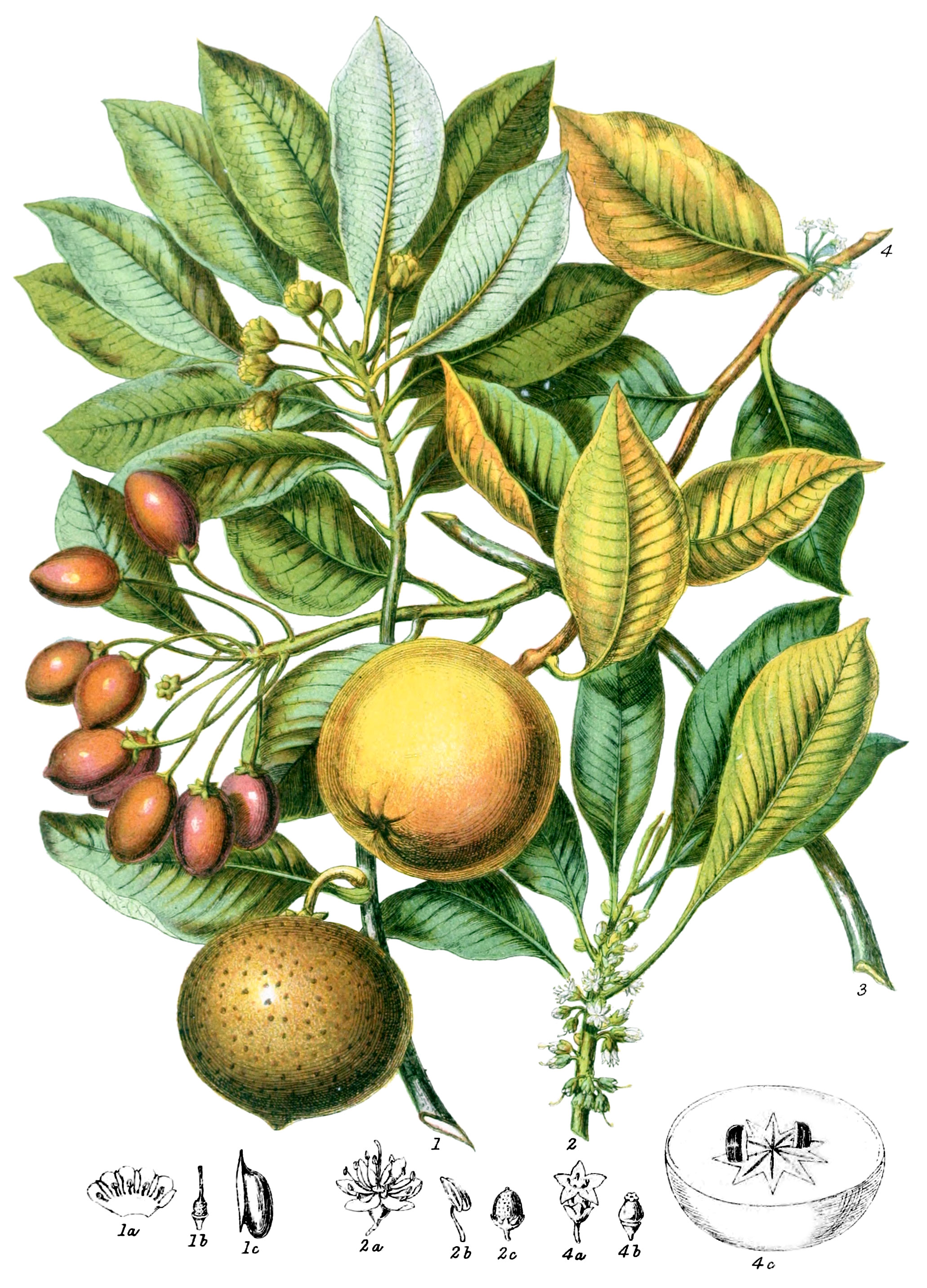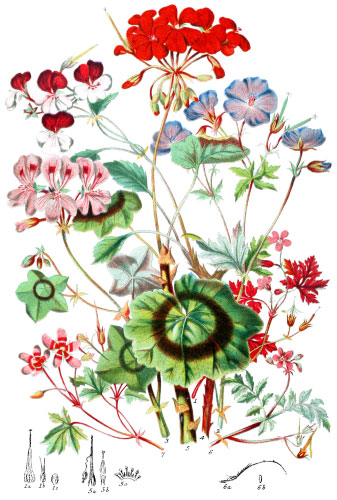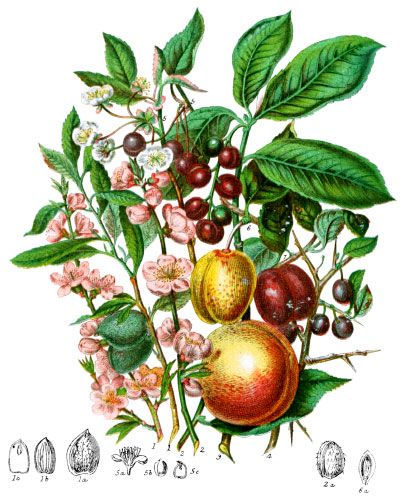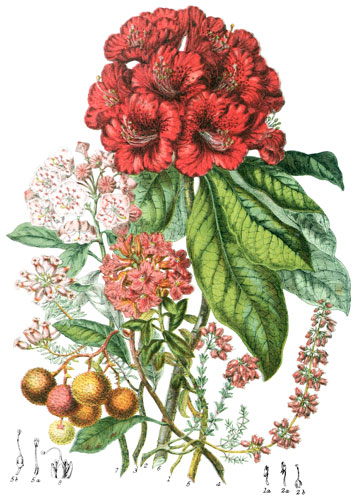Key characteristics
Trees and shrubs, nearly all tropical, of soft wood, often abounding in a milky glutinous juice. The leaves are alternate, or occasionally crowned into circles on the branches, without stipules, entire at the edges, leathery. The flowers proceed from the base of the leaf-stalks. The calyx is regular, divided into four or eight lobes, persistent. The corolla, is composed of one petal attached to the base of the ovary, regular, deciduous; its divisions usually equal in number to those of the calyx, rarely more, imbricated in the bud, sometimes fleshy. The stamens arise from the corolla, are of definite number, distinct; those which bear fertile anthers of the same number as the divisions of the corolla and opposite them; the imperfect stamens alternate with them. The ovary is above the base of the calyx, with several cells containing one ovule each; the style is single, the stigma undivided, or sometimes lobed. The fruit is fleshy, with several one-seeded cells; the seeds are nuts, often with a bony shining case, having a long slender scar on the inner face; they sometimes contain albumen.
This Tribe is closely allied to Ebenaceæ; chiefly distinguished by soft wood, milky juice, and complete flowers.
Astringent bark and oily fruit are the principal properties.
Select plants in this order
Not all plants listed are illustrated and not all plants illustrated are listed.
- Sapota is derived from the Mexican name Zapotl. Achras, a Greek name for a wild pear, is a genus of several large trees bearing eatable fruit. A. Sapota (1) grows to the height of twenty feet before branching, abounding in white tenacious juice; the fruit varies in size and shape, brown when ripe, the pulpy flesh yellow; like the Medlar, it is sweet in decay, two seeds only ripen, and are of pleasant scent and taste. It is much eaten by natives, and is also the favourite food of turkeys and other burns. Cumana and Margaretta Isle are the best stations for it. The Humming-bird forms its nest upon the leafy branches. The bark is used as a remedy for fever in Peru.
- A. mammosa, the Marmalade-tree of America, is a larger species; and the leaves being a foot long, and three inches wide, render it a valuable shade near dwellings. The cream-coloured flowers are succeeded by a large fruit having luscious flavour of quince marmalade.
- But the most universally important three of this tribe is Isonandra gutta (2); it is a remarkable instance of a valuable article lying dormant for a long period after its discovery, as if there were an appointed time for all things to come forth for the service of man. Two centuries ago, Tradescant, the first collector of botanical specimens in England, described a substance in his museum exactly resembling Gutta Percha; but at that time many things were classed as curiosities without a thought of utility; besides, the machinery by which it is now rendered available was not then invented, nor did many of the uses to which it is now applied exist. It was therefore removed with the rest of the Tradescant treasures to Oxford, and remained unperceived by the eyes of wisdom and science. The enormous increase of the imports of Gutta Percha from Singapore, after its renewed discovery, is probably unequalled; from 230lbs. in 1844, to 1,700,000lbs. in 1848. The extensive forests of the trees in Singapore, Borneo, and the countless islands of those seas, yield the principal supply of this wonderful material, which, abounding in the latex vessels, exudes from all parts of the stem and branches, on making incisions. The young leaf-buds are generally covered with the white glutinous fluid. It rivals and in many points resembles Caoutchouc, differing chiefly in not being elastic, and in becoming extremely pliable at a temperature of 145° Fahrenheit.
- Mimusops Kauki (3) affords gum from the bark, and bears sweetish fruit, eaten by the natives of India.
- From the aromatic flowers of M. Elengi a fragrant water is distilled.
- Chrysophyllum derives its name from the golden down which clothes the under surface of the leaves.
- C. Cainito (4) is a tall tree with slender, supple branches. The leaves, as well as fruit, are full of a milky juice, which is sweet and agreeable in the fruit when ripe.
- C. microphyllum is a beautiful species, with small leaves shining like gold and silver on the lower surface.
- Bassia yields from its fruit a thick white oily substance, like butter; one species is the Butter-tree described by Mungo Park as so useful to the inhabitants of the interior of Africa.
- B. longifolia is the Illupie of India, affording a valuable supply of oil for lamps.
- B. latifolia abounds still more in oil; a large supply has lately been imported to England with the intention of improving the manufacture of soap; the flowers are used in making arrack in India.
- The flowers of Bumelia grow in thick clusters on the stem; the wood is hard, and the astringent bark used in fevers.
- Lucuma and Imbricaria bear sweet and subacid fruit.
Locations
This Tribe inhabits chiefly the Tropics of Asia, Africa, and America; a few species belong to the south of North America, and to the Cape of Good Hope.
Legend
- Achras Sapota, Sappodilla Plum. South America.
- Corolla, opened.
- Pistil.
- Seed.
- Isonandra gutta, Gutta-percha Tree. Singapore and Borneo.
- Flower.
- Stamen.
- Fruit.
- Mimusops Kauki, Indian Mimusops. Manilla and China.
- Chrysophyllum Cainito, Star-Apple. West Indies.
- Flower.
- Ovary.
- Section of Fruit.
Explore more
Posters
Decorate your walls with colorful detailed posters based on Elizabeth Twining’s beautiful two-volume set from 1868.
Puzzles
Challenge yourself or someone else to assemble a puzzle of all 160 botanical illustrations.





